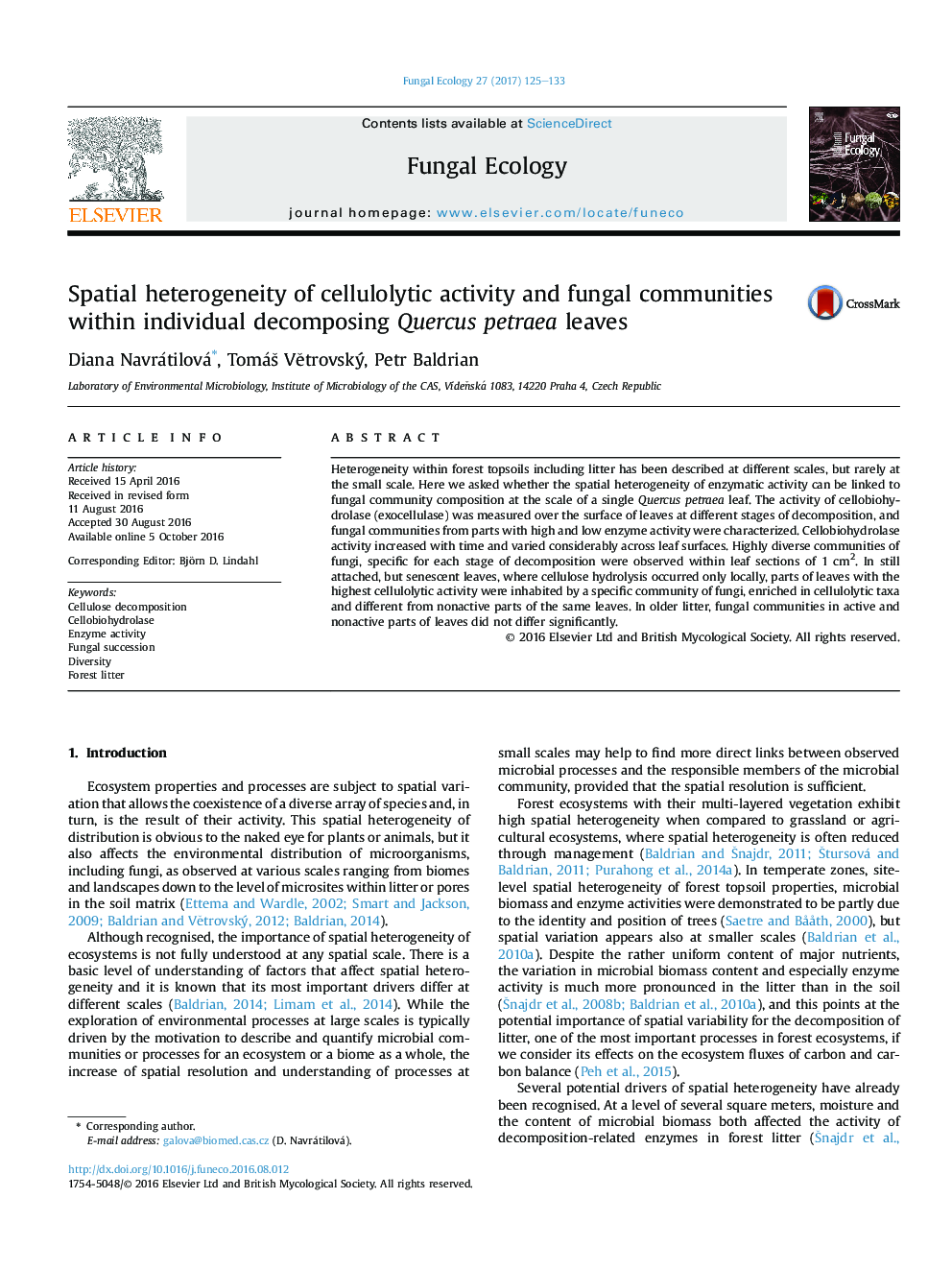| Article ID | Journal | Published Year | Pages | File Type |
|---|---|---|---|---|
| 5517696 | Fungal Ecology | 2017 | 9 Pages |
â¢Cellobiohydrolase activity increases during Quercus petraea litter decomposition.â¢Cellobiohydrolase activity varies largely across leaf surfaces.â¢Areas of initial cellulose decomposition are inhabited by specific fungal community.â¢Fungal community changes along litter decomposition.â¢Fungal diversity is high within 1 cm2 leaf areas and varies largely among leaves.
Heterogeneity within forest topsoils including litter has been described at different scales, but rarely at the small scale. Here we asked whether the spatial heterogeneity of enzymatic activity can be linked to fungal community composition at the scale of a single Quercus petraea leaf. The activity of cellobiohydrolase (exocellulase) was measured over the surface of leaves at different stages of decomposition, and fungal communities from parts with high and low enzyme activity were characterized. Cellobiohydrolase activity increased with time and varied considerably across leaf surfaces. Highly diverse communities of fungi, specific for each stage of decomposition were observed within leaf sections of 1Â cm2. In still attached, but senescent leaves, where cellulose hydrolysis occurred only locally, parts of leaves with the highest cellulolytic activity were inhabited by a specific community of fungi, enriched in cellulolytic taxa and different from nonactive parts of the same leaves. In older litter, fungal communities in active and nonactive parts of leaves did not differ significantly.
Graphical abstractDownload high-res image (238KB)Download full-size image
